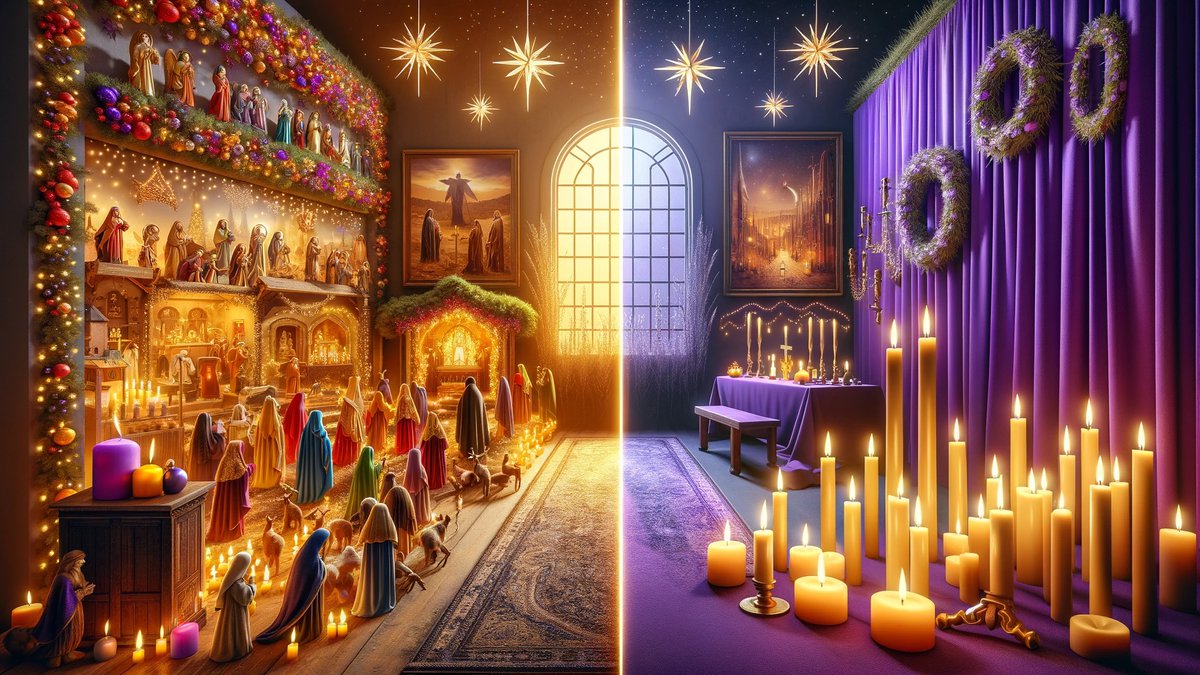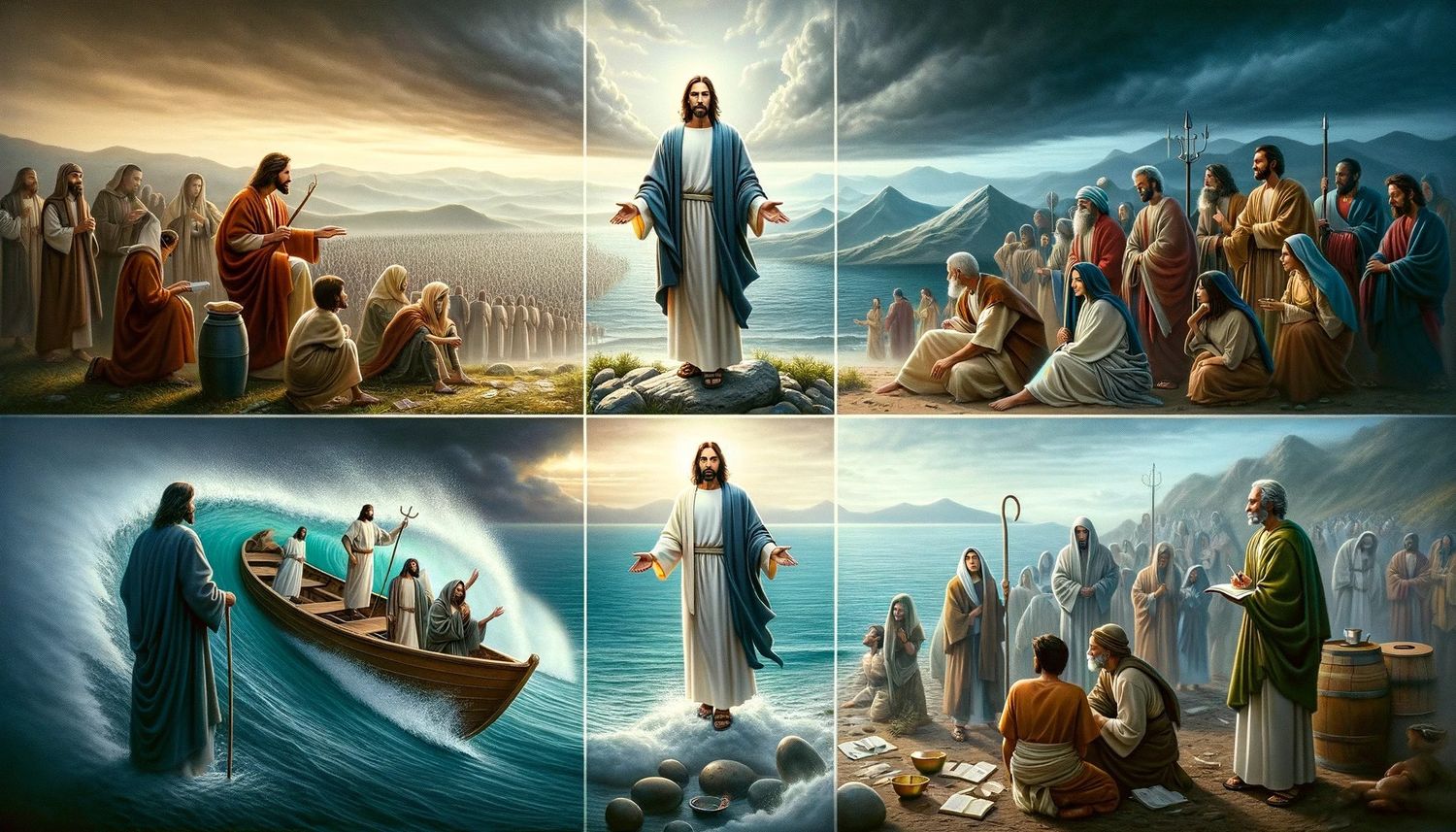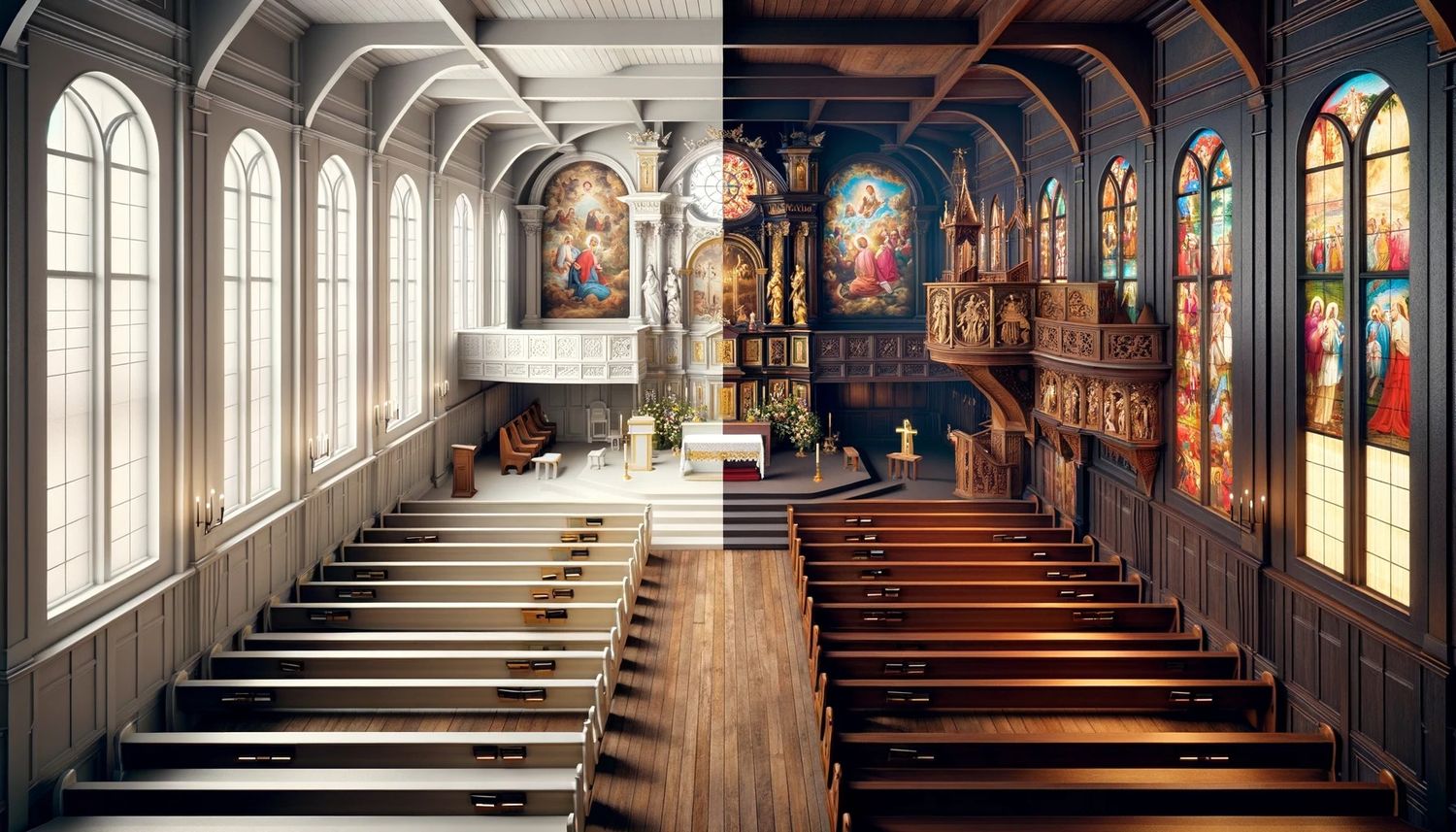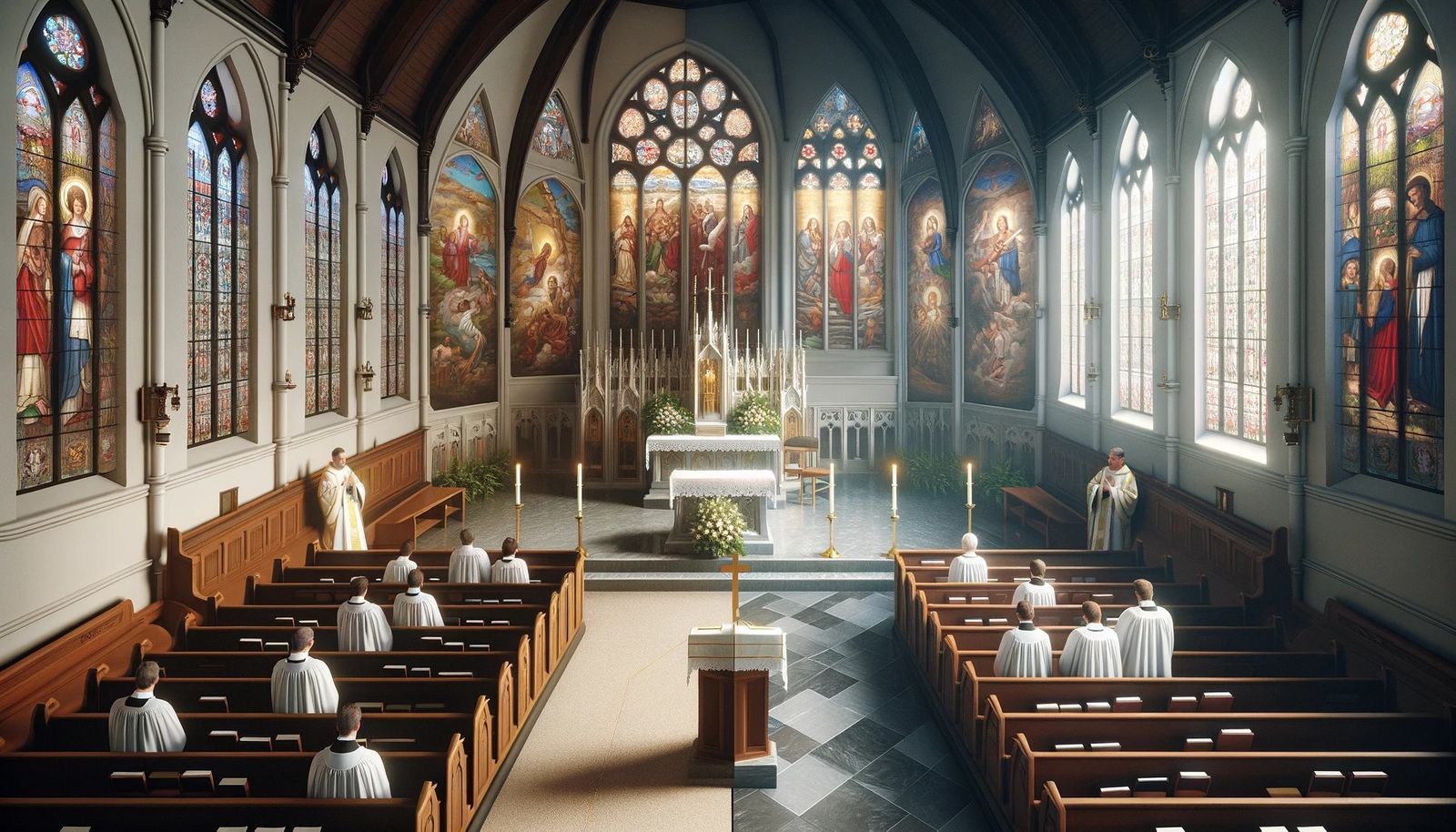Home>Special Themes>How Is Advent Different From Lent


Special Themes
How Is Advent Different From Lent
Published: February 29, 2024
Jason DeRose, Managing Editor at Christian.net, uses his expertise in religion and journalism to deepen understanding of faith's societal impacts. His editorial leadership, coupled with a strong academic background, enriches the platform’s diverse content, earning him recognition in both journalism and religious circles.
Discover the unique significance of Advent and Lent, and how they differ in their themes and observances. Explore the special themes of each season.
(Many of the links in this article redirect to a specific reviewed product. Your purchase of these products through affiliate links helps to generate commission for Christian.net, at no extra cost. Learn more)
Table of Contents
The Origins of Advent and Lent
-
Advent: The word "Advent" comes from the Latin word "adventus," which means "coming" or "arrival." It originated in the 4th and 5th centuries as a period of preparation for the celebration of the birth of Jesus Christ. The early Christians observed a fast before the feast of Christmas, similar to the Lenten fast before Easter. Over time, the observance of Advent evolved to include not only the anticipation of Christ's first coming but also the expectation of his second coming.
-
Lent: The word "Lent" is derived from the Old English word "lencten," which means "spring." Lent has its roots in the early Christian church, where it was established as a period of fasting and preparation for Easter. The 40-day duration of Lent mirrors the 40 days that Jesus spent fasting in the wilderness. This period was initially observed as a time of penance and self-examination for new converts preparing for baptism, but it later became a season of spiritual renewal for the entire Christian community.
-
Similarities: Both Advent and Lent have their origins in the early Christian traditions of fasting and preparation. They are times of reflection, repentance, and spiritual growth, leading up to significant events in the Christian calendar – the birth of Jesus at Christmas and the resurrection of Jesus at Easter. While Advent focuses on the anticipation of Christ's coming, both in the past and the future, Lent centers on the journey towards the commemoration of Jesus' sacrifice and triumph over death.
Read more: How Is Advent Different From Lent?
The Purpose of Advent and Lent in the Christian Calendar
-
Preparation and Anticipation: Both Advent and Lent serve as periods of preparation and anticipation in the Christian calendar. Advent prepares the hearts and minds of believers for the celebration of the birth of Jesus Christ, while Lent prepares them for the commemoration of Jesus' death and resurrection. These seasons provide an opportunity for believers to reflect on the significance of these events and to prepare themselves spiritually for the observance of Christmas and Easter.
-
Spiritual Discipline: Advent and Lent are times of spiritual discipline and self-examination. During Advent, Christians are called to focus on the themes of hope, peace, joy, and love as they await the coming of Christ. This period encourages believers to examine their lives in light of these virtues and to cultivate a spirit of expectancy and readiness. Similarly, Lent calls for self-reflection, repentance, and fasting as a means of drawing closer to God and aligning one's life with the example of Jesus.
-
Renewal and Transformation: Both seasons emphasize the themes of renewal and transformation. Advent invites believers to renew their faith and hope in the promises of God, while Lent challenges them to undergo a spiritual transformation through acts of self-denial, prayer, and acts of charity. These periods of introspection and spiritual growth are intended to lead to a deeper understanding of the Christian faith and a renewed commitment to living out its principles.
-
Communal Worship and Fellowship: Advent and Lent are times for communal worship and fellowship within the Christian community. These seasons provide opportunities for believers to come together in prayer, study, and acts of service. The shared experience of observing these seasons fosters a sense of unity and solidarity among believers, as they journey together towards the celebration of Christmas and Easter.
-
Preparation for Mission: Both Advent and Lent prepare believers for mission and service in the world. The spiritual preparation and renewal experienced during these seasons equip Christians to be ambassadors of Christ's love, compassion, and justice in their communities. As they reflect on the significance of Christ's coming and sacrifice, believers are inspired to share the message of hope and redemption with others, embodying the true spirit of Christmas and Easter throughout the year.
The Practices and Traditions of Advent and Lent
Advent
-
Advent Wreath: One of the most recognizable traditions of Advent is the Advent wreath. Typically, it consists of a circular wreath with four candles, one for each Sunday of Advent. The lighting of these candles symbolizes the increasing anticipation and preparation for the coming of Christ. The first candle represents hope, the second symbolizes peace, the third signifies joy, and the fourth represents love. The center candle, known as the Christ candle, is lit on Christmas Eve or Christmas Day, signifying the arrival of Christ.
-
Advent Calendar: Advent calendars are a popular way for families and individuals to count down the days until Christmas. These calendars often contain small doors or compartments, each concealing a treat or a small gift. Opening a door each day serves as a daily reminder of the approaching celebration of Christ's birth.
-
Fasting and Prayer: While not as stringent as the fasting observed during Lent, some individuals and churches choose to practice fasting and increased prayer during Advent. This spiritual discipline serves as a means of focusing on the true meaning of Christmas and preparing one's heart for the arrival of Christ.
Lent
-
Ash Wednesday: Lent commences with Ash Wednesday, a day of repentance and reflection. Many Christians attend a worship service where they receive ashes on their foreheads in the shape of a cross, symbolizing mortality and the need for repentance. This act serves as a reminder of human frailty and the call to turn away from sin.
-
Fasting and Abstinence: Lent is traditionally associated with fasting and abstinence. While the specific practices vary among different Christian denominations, many individuals choose to give up certain foods or habits as a form of self-discipline and spiritual focus. Some may also fast from a particular meal or indulge in acts of charity and service.
-
Almsgiving and Acts of Charity: Lent encourages acts of charity and almsgiving as a way of embodying Christ's love and compassion. Many churches and organizations organize initiatives to support the less fortunate during this season, emphasizing the importance of caring for those in need.
-
Stations of the Cross: The practice of the Stations of the Cross, particularly common in Catholic and Anglican traditions, involves meditating on the events of Jesus' final journey to the cross. This devotional practice typically consists of 14 stations, each representing a specific event from Jesus' condemnation to his burial.
-
Easter Triduum: The Easter Triduum, comprising Maundy Thursday, Good Friday, and Holy Saturday, marks the culmination of Lent and the beginning of the Easter celebration. These days are characterized by special liturgical services and observances, including the commemoration of the Last Supper, the veneration of the cross, and the Easter Vigil.
Both Advent and Lent encompass a rich tapestry of practices and traditions that serve to deepen the spiritual significance of these seasons in the Christian calendar. These observances provide opportunities for believers to engage in meaningful rituals, prayerful reflection, and acts of devotion as they prepare for the celebrations of Christmas and Easter.
The Symbolism and Meaning of Advent and Lent
Advent
-
Light and Darkness: The symbolism of light and darkness is central to the observance of Advent. As the days grow shorter and darkness prevails in the natural world, the lighting of the Advent candles represents the increasing presence of light, signifying the coming of Christ, who is often referred to as the "Light of the World." This symbolism serves as a reminder of the hope and joy that Christ's birth brings to a world shrouded in spiritual darkness.
-
Anticipation and Hope: Advent embodies the spirit of anticipation and hope. The waiting period leading up to Christmas mirrors the longing of the Israelites for the promised Messiah. The Advent season encourages believers to cultivate a sense of hopeful expectation, not only for the commemoration of Christ's birth but also for his promised return. This hopeful anticipation serves as a reminder of God's faithfulness and the fulfillment of His redemptive plan.
-
Preparation and Readiness: The symbolism of Advent extends to the theme of preparation and readiness. Just as individuals and families prepare their homes for the celebration of Christmas, the Advent season calls for the preparation of hearts and minds for the arrival of Christ. This preparation involves self-examination, repentance, and a renewed commitment to living in accordance with the teachings of Jesus.
Lent
-
Journey and Wilderness: Lent is symbolically associated with the journey of Jesus into the wilderness, where he fasted and was tempted for 40 days. This period of self-denial and spiritual discipline reflects the wilderness experience of the Israelites and Jesus' own journey of sacrifice and obedience. The wilderness symbolizes a place of testing, purification, and spiritual growth, emphasizing the transformative nature of the Lenten season.
-
Sacrifice and Redemption: The symbolism of Lent is deeply rooted in the themes of sacrifice and redemption. The 40-day period mirrors the 40 days that Jesus spent in the wilderness and serves as a time for believers to reflect on the ultimate sacrifice of Jesus on the cross. The Lenten journey culminates in the commemoration of Jesus' crucifixion and resurrection, highlighting the redemptive power of his sacrifice and the promise of new life.
-
Renewal and Restoration: Lent symbolizes a season of renewal and restoration. The practices of fasting, prayer, and acts of charity are symbolic of the process of spiritual renewal and the restoration of one's relationship with God. The Lenten journey invites believers to examine their lives, seek forgiveness, and embrace the opportunity for personal and communal restoration through the grace of God.
In essence, the symbolism and meaning of Advent and Lent encompass profound spiritual truths and serve as powerful reminders of the foundational aspects of the Christian faith. These seasons invite believers to engage in a deeper understanding of the redemptive narrative, the transformative power of sacrifice, and the enduring hope found in the promises of God.
The Differences Between Advent and Lent
-
Focus and Anticipation: Advent is primarily focused on the anticipation of the birth of Jesus Christ, emphasizing themes of hope, peace, joy, and love. It serves as a time of joyful expectation and preparation for the celebration of Christmas. On the other hand, Lent centers on the journey towards the commemoration of Jesus' sacrifice and triumph over death. It is a period of solemn reflection, repentance, and spiritual discipline, leading up to the observance of Easter.
-
Duration and Timing: Advent typically spans the four Sundays leading up to Christmas, marking a period of approximately four weeks. In contrast, Lent is a 40-day season, excluding Sundays, and begins on Ash Wednesday, culminating in the celebration of Easter. The duration of Lent mirrors the 40 days that Jesus spent fasting in the wilderness, while Advent serves as a shorter period of preparation for the joyous festival of Christmas.
-
Atmosphere and Mood: The atmosphere of Advent is one of joyful anticipation and eager expectation. It is characterized by the excitement and anticipation of the coming celebration, marked by the lighting of Advent candles, the singing of carols, and the joyful anticipation of Christ's birth. In contrast, Lent carries a more solemn and introspective mood, emphasizing self-examination, repentance, and acts of self-denial. The tone of Lent is one of somber reflection, as believers contemplate the sacrifice and suffering of Jesus.
-
Liturgical Color and Symbolism: The liturgical color associated with Advent is typically purple or blue, symbolizing royalty and anticipation. In some traditions, a pink candle is lit on the third Sunday of Advent, known as Gaudete Sunday, symbolizing joy. On the other hand, the liturgical color of Lent is often purple, signifying penitence and preparation. Additionally, the use of ashes on Ash Wednesday and the absence of the word "alleluia" in liturgical worship during Lent further distinguish the season from Advent.
-
Fasting and Feasting: While both seasons involve elements of fasting and spiritual discipline, the nature of these practices differs. Advent fasting, if observed, is generally less stringent and is often focused on spiritual preparation rather than strict abstinence. In contrast, Lenten fasting and abstinence are more rigorously observed, with many individuals choosing to give up certain foods or habits as a form of self-discipline and spiritual focus.
In summary, Advent and Lent, while sharing common themes of preparation and spiritual growth, are distinct in their focus, duration, atmosphere, liturgical symbolism, and practices. These differences contribute to the rich tapestry of the Christian calendar, providing believers with diverse opportunities for reflection, renewal, and worship throughout the liturgical year.














